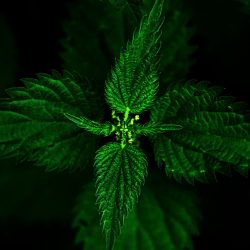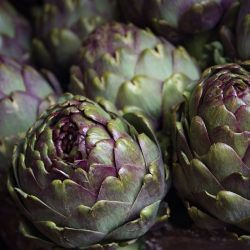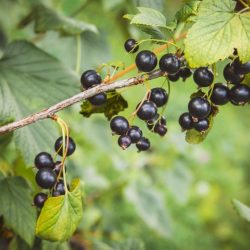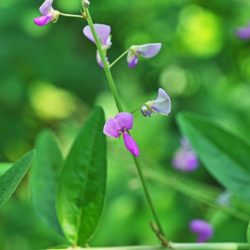A medical material, a tinctorial plant but also a spice, turmeric has provided its benefits to men for 3,000 years . This perennial plant, some specimens of which nowadays adorn florists’ shops, is best known for its underground parts which, like ginger, are in fact made up of rhizomes.
A little history
Turmeric has been known to the Western world since Antiquity if we believe the descriptions given by Dioscorides . In Europe, in the 17th century, Lémery indeed considered it as an aperitif and as “suitable for removing obstructions in the spleen, for treating jaundice and stone” (by stone to mean lithiasis). In the 19th century, it was also used as a stimulant for the liver , a tonic for digestive and diuretic functions . Finally, in the 20th century, the French doctor Henri Leclerc took up a certain number of these therapeutic indications.
What are the main pharmacological properties of the turmeric rhizome?
Anti-inflammatory properties:
Many turmeric compounds exhibit anti-inflammatory and analgesic effects mainly via volatile compounds such as germacrone (sesquiterpene isolated from volatile oils). These beneficial effects are shown both in vitro and in vivo , in response to acute or chronic inflammation . These anti-inflammatory and chondroprotective properties are also widely documented in rheumatology (arthritis, osteoarthritis).
-
Acute Inflammation Studies:
The most frequent mechanism invoked is that involving prostaglandins, the secretion of which is significantly reduced. In the event of inflammation, the active compounds of turmeric also inhibit trypsin and hyaluronidase, compounds essential for the development of certain inflammatory conditions, in particular of the joints.
-
Chronic Inflammation Studies:
Numerous studies have ultimately been carried out in humans (postoperative inflammation, healing, prevention of bone resorption, locomotor and sensory recovery after spinal cord injury, pulmonary protection, etc.).
Immunomodulating and anticancer properties:
Turmeric stimulates phagocytosis, killer cell (NK) activity, as well as the production of type G immunoglobulins (Ig G). It inhibits the integrase of HIV-1, which catalyzes the interaction of the viral genome in the DNA of the infected cell.
The anticancer properties of curcumin are now well documented. Its anti-cancer potentials relate more particularly to damage to the ovaries, skin, esophagus, colon and lymphoma cells. According to a 2019 review of the scientific literature, although curcuminexhibits low bioavailability, its role in advanced cancer treatment and supportive care has been studied in numerous clinical trials. After promising results in phase I and II trials, several phase III trials in different indications are underway in 2019 in order to research direct anticancer effects. The authors specify that this compound also has beneficial effects on the side effects (neurotoxicity, cardiotoxicity, nephrotoxicity, hematotoxicity, etc.) linked to the treatment of cancer.
Hepatoprotective property:
In the event of hepatic aggression, curcumin has a major protective role in particular by activating the antioxidant enzymatic systems in the liver: superoxide dismutase, catalase, glutathione peroxidase and transferase.
Gastrointestinal properties:
During daily administration, turmeric generates :
In the stomach:
- Increased secretion of gastrin.
- Inhibition of ulcer formation induced by various stresses: alcohol, indomethacin, etc.
- Inhibition of Helicobacter pylori.
At the level of the gallbladder:
- Choleretic, cholagogue and preventive action of cholelithiasis.
In the pancreas:
- Increased activity of pancreatic lipases and amylases, trypsin as well as chymotrypsin.
In the gastrointestinal tract:
- Anti-inflammatory of the intestinal mucosa . In vitro , urcumin reduces the inflammatory response of the intestines by reducing stress on the reticulum, thus protecting the intestine from bacterial invasion. In an animal model of IBD, oral administration of turmeric notably improves colonic inflammation by reducing interleukin-23 (IL-23) and myeloperoxidase (MPO). This action takes place through cellular and gene mechanisms. Demethoxycurcumin inhibits the induction of iNOS in an in vitro model of intestinal inflammation of human mucosa. Curcumin regulates the barrier functions of the intestine.
- Prebiotic activity : it was shown in 2019 by Iranian researchers that turmeric extract exhibits significantly, in an artificial model, excellent resistance to human gastric and intestinal juice compared to a standard prebiotic (inulin). Not only is it digested by probiotics, including Lactobacillus rhamnosus GG (LGG) and Bifidobacterium animalis BB12, it also promotes the growth of these bacteria even after 72 hours. This same study also showed that turmeric exerts suppressive effects on the production of interleukin-8 (IL-8) induced by lipopolysaccaride (LPS), demonstrating its anti-inflammatory activity.
Cardiovascular protection:
-
Protector of lipid peroxidation:
By its antioxidant action , turmeric among other things reduces lipid peroxidation induced by chemical molecules (carbon tetrachloride, paraquat and cyclophosphamide). Turmeric thus slows down the atheromatous process in the arterial system, by reducing aortic lipid deposits and blood levels of peroxidized lipids in vivo , and by increasing the efflux of cholesterol in foam cells.
-
Myocardial and vascular protector:
A standardized hexanolic extract of turmeric has been shown to limit damage to cardiac tissue after ischemia / reperfusion, by reducing inflammation. Through an epigenetic mechanism, curcumin helps prevent strokes .
-
Lipid-lowering effect:
Turmeric is cholesterol lowering (it lowers LDL cholesterol and ApoB, and it increases HDL cholesterol and ApoA). It decreases the intestinal absorption of cholesterol . It restores the metabolic pathways in a dyslipidemic model.
Metabolic properties:
The polyphenols in turmeric decrease the inflammatory response of fat cells, and therefore improve the metabolic response. In vitro , curcumin and its derivatives actually inhibit the absorption of fructose, via the glucose transporters GLUT2 and GLUT5.
Neuroprotective, anti-neurodegenerative and neuropsychic properties:
A 2018 scientific literature review indicates that Curcuma longa increases the levels of antioxidants and lowers those of oxidants, while inhibiting the activity of acetylcholinesterase in the nervous system. Its neuroprotective effect is manifested in particular by a reduction in pro-inflammatory cytokines (IL-6, IL1β, TNF-α). Turmeric improves neurodegenerative diseases and has therapeutic potential in disorders associated with neuroinflammation and neurotransmitter deficiency, such as Alzheimer’s disease and depression .
Antimicrobial and anti-infectious activities:
Turmeric also has antimicrobial, antifungal and antiparasitic properties . In particular, curcumin promotes in vitro the elimination of M. tuberculosis by macrophages. It is particularly effective on Trichomonas vaginilis .
Are there any precautions for use with Turmeric?
Contraindications:
- Turmeric is contraindicated in cases of obstructions of the bile ducts, presence of infracentimetric gallstones, as well as biliary or hepatic diseases.
- The EMA does not recommend turmeric during pregnancy or lactation.
Side effects :
- In liquid form, turmeric can sometimes color saliva yellow.
Precautions for use:
- Not recommended for children and adolescents under 18 years old.
Drugs interactions :
- Turmeric having a high-dose antiplatelet and anti-inflammatory action, its combination with an anti-vitamin K can modify the INR (indicator of blood coagulation) and requires adjusting the dose of anticoagulants if necessary as well as monitoring of the INR between 3 and 7 days after the introduction and stopping the intake of the plant.
- Turmeric could potentiate the effect of new oral anticoagulants such as rivaroxaban , by interacting with CYP3A4.
- Likewise, turmeric can interact with certain chemotherapy drugs. Check the type of interaction in case of possible association of turmeric with one of these products. The intensity of the interaction can indeed be assessed on the site of the database on drugs Thériaque (Hedrine).
- The interactions of turmeric at the cytochrome level therefore lead to the simultaneous use of turmeric with certain chemotherapy drugs to be discouraged.
How to take Turmeric and in what dosage?
Dry form:
- As a food supplement, in the form of capsules of dry extract, standardized extract of fresh plant or turmeric powder.
Liquid form:
- Standardized fluid extract of fresh plant : 5 ml per dose, 2 times per day in water.
- Infusion : 1 to 2 g of turmeric powder, possibly with 3 or 4 black peppercorns, in 150 ml of boiling water for 10 to 15 minutes, 1 cup 1 to 2 times a day.
Turmeric in masterly preparation of standardized extracts in liquid form (EPS)
In association with milk thistle :
In fatty liver disease, metabolic syndrome or type 2 diabetes .
In association with licorice :
To fight against gastritis, the aftermath of peptic ulcer , hepatitis, functional intestinal disorders, colitis, osteoarticular and visceral inflammation ( endometriosis ).
In combination with astragalus and ginkgo biloba :
In cardiovascular, immune and cerebral protection.
In association with blackcurrant and figwort :
Against painful osteoarthritis and chondroprotection.
In association with fumitory :
In the fight against dyspepsia and gallstones.
In association with desmodium :
In the use of a basic hepatic detoxification treatment, polymedication, in particular in the elderly, and in digestive disorders.
Medical bibliographic sources and clinical trials :
- Septembre-Malaterre A. et al., Curcuma longa polyphenol improve insulin-mediated lipid accumulation and attenuate proinflammatory response of 3T3-L1 adipose car cells during oxidative stress through regulation of key adipokines and antioxidant enzymes, Biofactors, 2016
- Ghosh S. et al., The beneficial role of curcumin on inflammation, diabetes and neurodegenerative disease ; A recent update, Food Chem Toxicol., 2015
- Cho J.A., et al. Curcumin utilizes the anti-inflammatory response pathway to protect the intestine against bacterial invasion; Nutr Res Pract., 2015
- Li Y. et al., Curcumin attenuates glutamate neurotoxicity in the hippocampus by suppression of ER stress-associated TXNIP/NLRP3 inflammasome activation in a manner dependent on AMPK, Toxicol Appl Pharmacol., 2015
- Ghorbani Z. et al. Anti-hyperglycemic and insulin sensitizer effects of turmeric and its principle constituent curcumin, Int J Endocrinom Metab., 2014
- Panahi Y. et al., Antioxidant and anti-inflammatory effects of curcuminoid-piperine combination car in subjetcs with metabolic syndrome ; A randomized controlled trial and an uplated meta-analysis, Clin Nutr., 2015
- Zorofchian Moghadamtousi S. et al., A Review on Antibacterial, Antiviral, and Antifungal Activity of Curcumin, Biomed Res Int., 2014
- Adiwidjaja J. et al., Curcumin as car clinically-promising anti-cancer agent : pharmacokinetics and drug interactions, Expert Opinion on Grug Metabolism & Toxicology, 2017
- Siddhartha S. et al., Curcumin-mediated regulation of intestinal barrier function : The mechanism underlying its beneficial effects, Tissue Barriers, 2018
- Rungseesantivanon S. et al. Curcumin supplementation could improve diabetes-induced endothelialdysfunction associated with decreased vascular superoxide production and PKC inhibition, BMC Complementary and Alternative Medicine, 2010







